Abstract
The variation of indole-3-acetic acid (IAA) transport along Lupinus albus L. hypocotyls was studied using decapitated seedlings and excised sections. To confirm that the mobile species was IAA and not IAA metabolites, dual isotope-labeled IAAs, [5-3H]IAA + [1-14C]IAA, were used. After apical application to decapitated seedlings, the longitudinal distribution of both isotopes at different transport periods showed that the velocity of IAA transport was higher in the apical, elongating region than in the basal, non-growing region. This variation in velocity was not a traumatic consequence of decapitation because after application of IAA to the basal region of decapitated seedlings, both the velocity and intensity of IAA transport were lower than in the apical treatment. The variation in IAA transport down the hypocotyl was confirmed when it was measured in excised sections located at different positions along the hypocotyl. The velocity and, to a greater extent, the intensity of IAA transport decreased from the apical to the basal sections. Consequently, if the amount of IAA reaching the apical zones of lupin hypocotyl were higher than the IAA transport capacity in the basal zones, accumulation of mobile IAA might be expected in zones located above the basal region. In fact, an IAA accumulation occurred in the elongating region during the first 4-h period of transport after apical treatment with IAA. It is proposed that the fall in IAA transport along the hypocotyl might be responsible for the IAA distribution and, consequently, for the growth distribution reported in this organ. An indirect proof of this was obtained from experiments that showed that the excision of the slowly transporting basal zones strongly reduced the growth in the remaining part of the organ, whereas excision of the root caused no significant modification in growth during a 20-h period.
Full text
PDF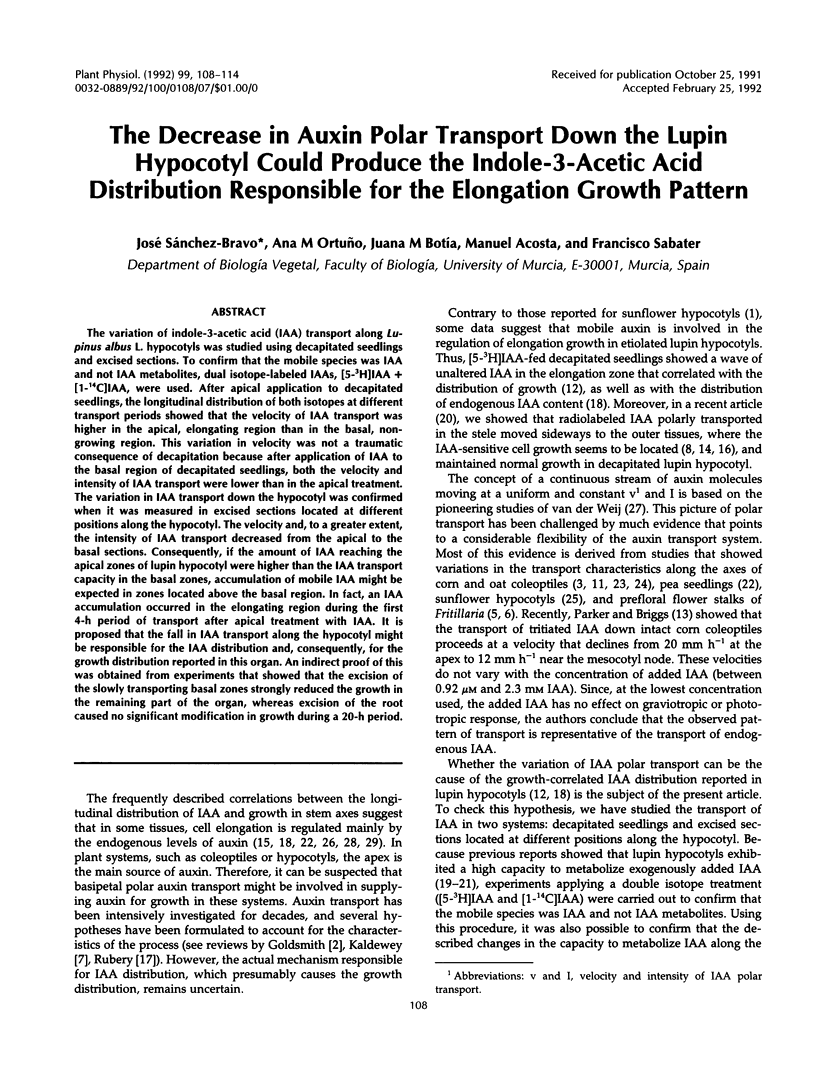

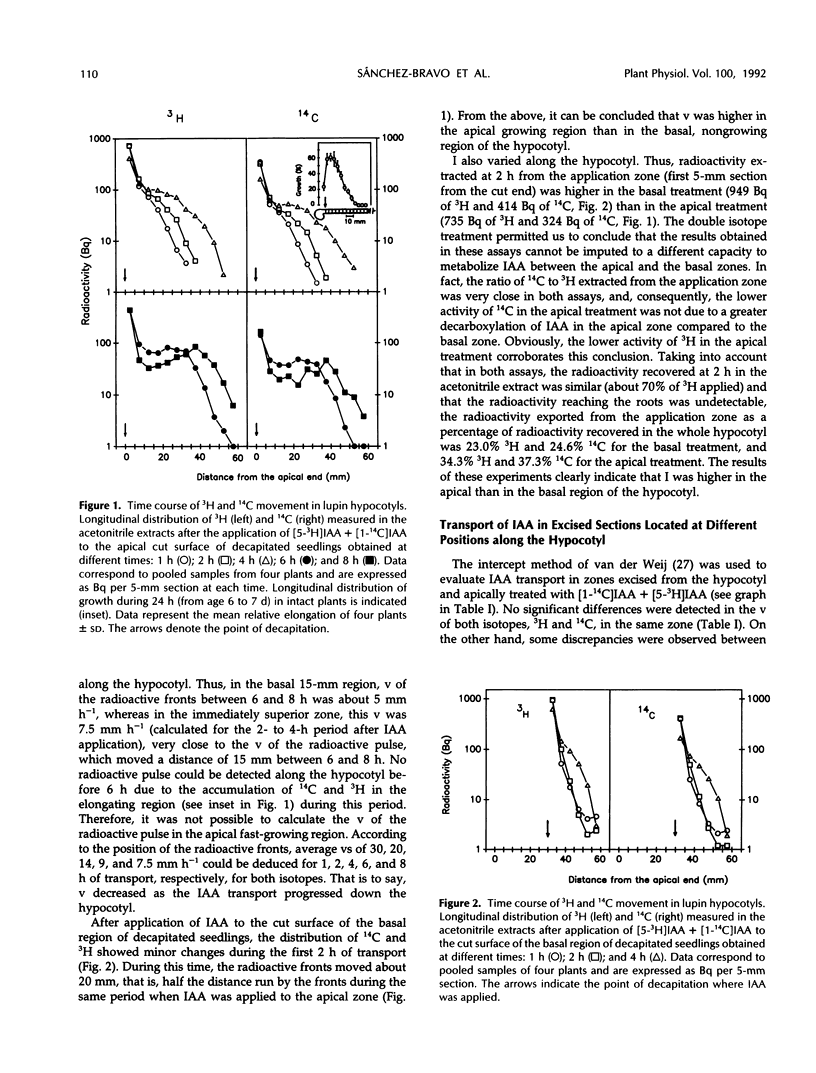

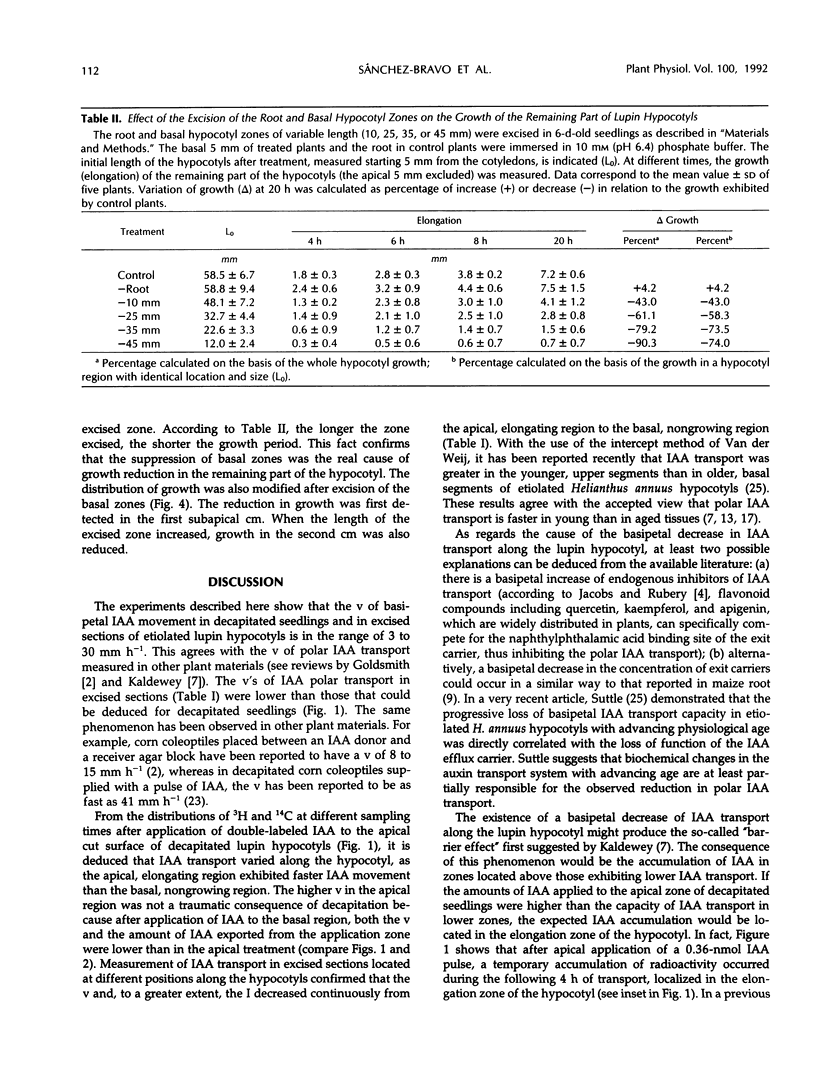
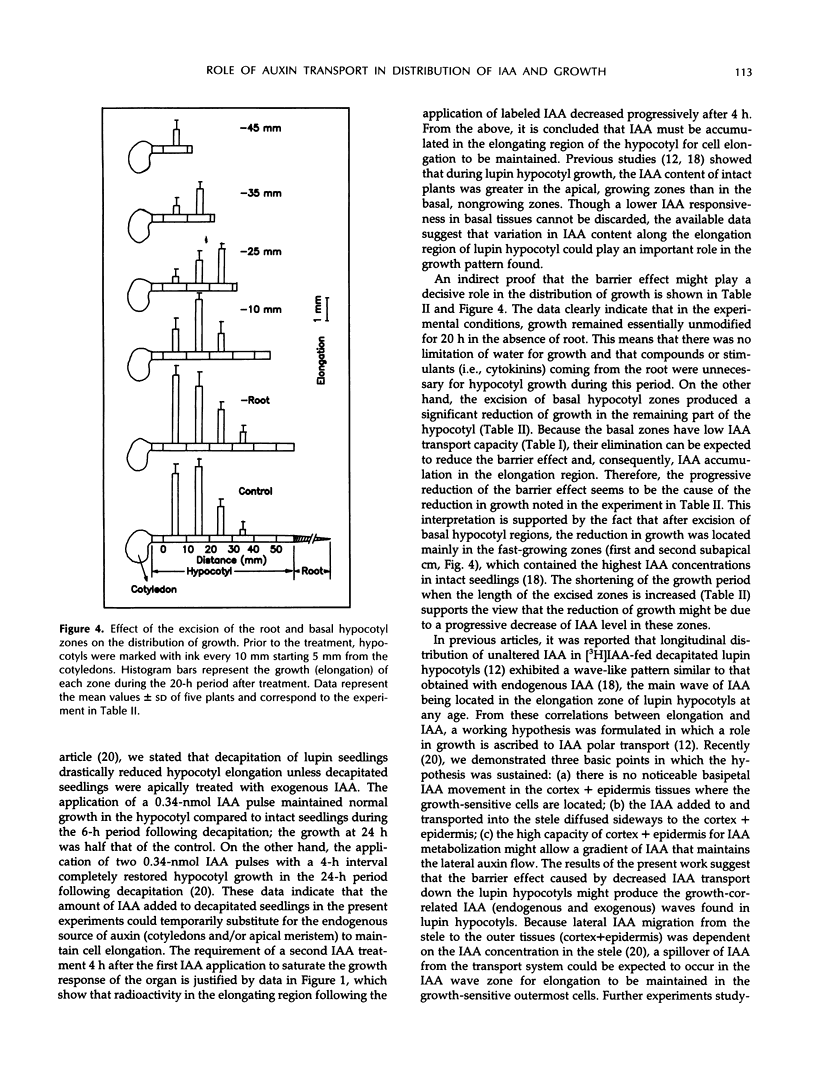
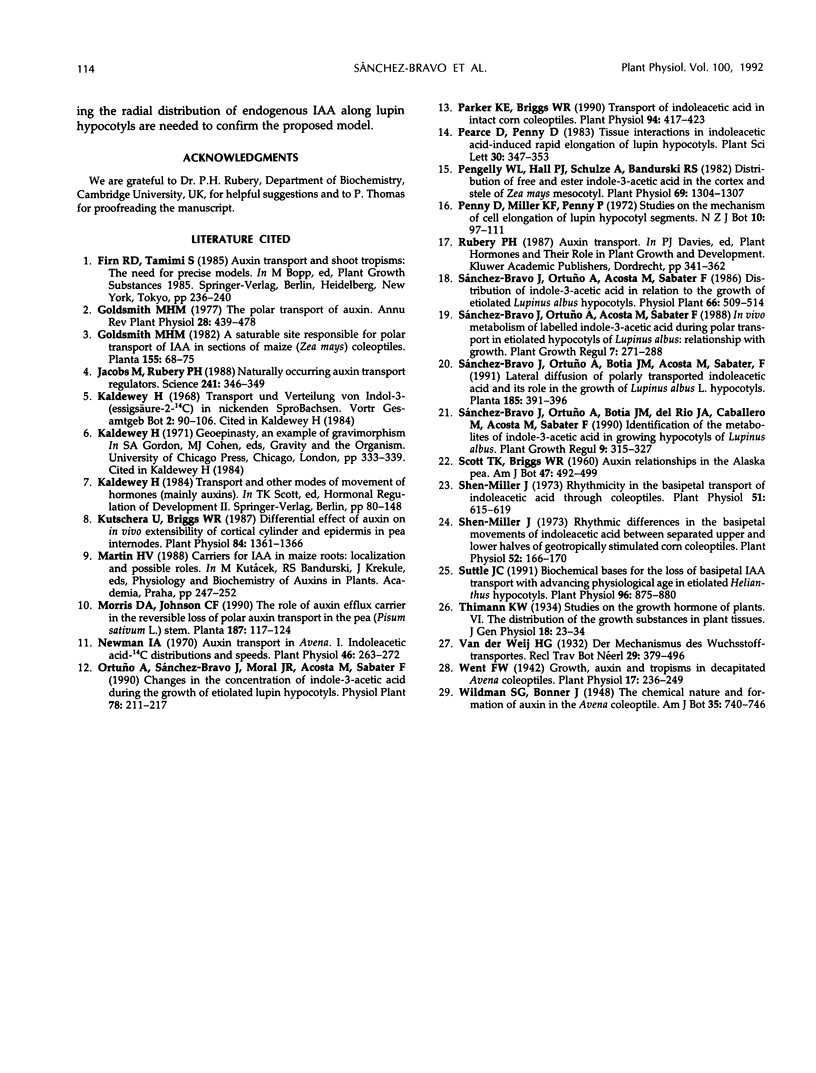
Selected References
These references are in PubMed. This may not be the complete list of references from this article.
- Jacobs M., Rubery P. H. Naturally occurring auxin transport regulators. Science. 1988 Jul 15;241(4863):346–349. doi: 10.1126/science.241.4863.346. [DOI] [PubMed] [Google Scholar]
- Kutschera U., Briggs W. R. Differential effect of auxin on in vivo extensibility of cortical cylinder and epidermis in pea internodes. Plant Physiol. 1987 Aug;84(4):1361–1366. doi: 10.1104/pp.84.4.1361. [DOI] [PMC free article] [PubMed] [Google Scholar]
- Newman I. A. Auxin transport in Avena: I. Indoleacetic Acid-C distributions and speeds. Plant Physiol. 1970 Aug;46(2):263–272. doi: 10.1104/pp.46.2.263. [DOI] [PMC free article] [PubMed] [Google Scholar]
- Parker K. E., Briggs W. R. Transport of indoleacetic Acid in intact corn coleoptiles. Plant Physiol. 1990 Oct;94(2):417–423. doi: 10.1104/pp.94.2.417. [DOI] [PMC free article] [PubMed] [Google Scholar]
- Pengelly W. L., Hall P. J., Schulze A., Bandurski R. S. Distribution of Free and Ester Indole-3-Acetic Acid in the Cortex and Stele of the Zea mays Mesocotyl. Plant Physiol. 1982 Jun;69(6):1304–1307. doi: 10.1104/pp.69.6.1304. [DOI] [PMC free article] [PubMed] [Google Scholar]
- Shen-Miller J. Rhythmic Differences in the Basipetal Movement of Indoleacetic Acid between Separated Upper and Lower Halves of Geotropically Stimulated Corn Coleoptiles. Plant Physiol. 1973 Aug;52(2):166–170. doi: 10.1104/pp.52.2.166. [DOI] [PMC free article] [PubMed] [Google Scholar]
- Shen-Miller J. Rhythmicity in the Basipetal Transport of Indoleacetic Acid through Coleoptiles. Plant Physiol. 1973 Apr;51(4):615–619. doi: 10.1104/pp.51.4.615. [DOI] [PMC free article] [PubMed] [Google Scholar]
- Suttle J. C. Biochemical Bases for the Loss of Basipetal IAA Transport with Advancing Physiological Age in Etiolated Helianthus Hypocotyls: Changes in IAA Movement, Net IAA Uptake, and Phytotropin Binding. Plant Physiol. 1991 Jul;96(3):875–880. doi: 10.1104/pp.96.3.875. [DOI] [PMC free article] [PubMed] [Google Scholar]
- Went F. W. GROWTH, AUXIN, AND TROPISMS IN DECAPITATED AVENA COLEOPTILES. Plant Physiol. 1942 Apr;17(2):236–249. doi: 10.1104/pp.17.2.236. [DOI] [PMC free article] [PubMed] [Google Scholar]


